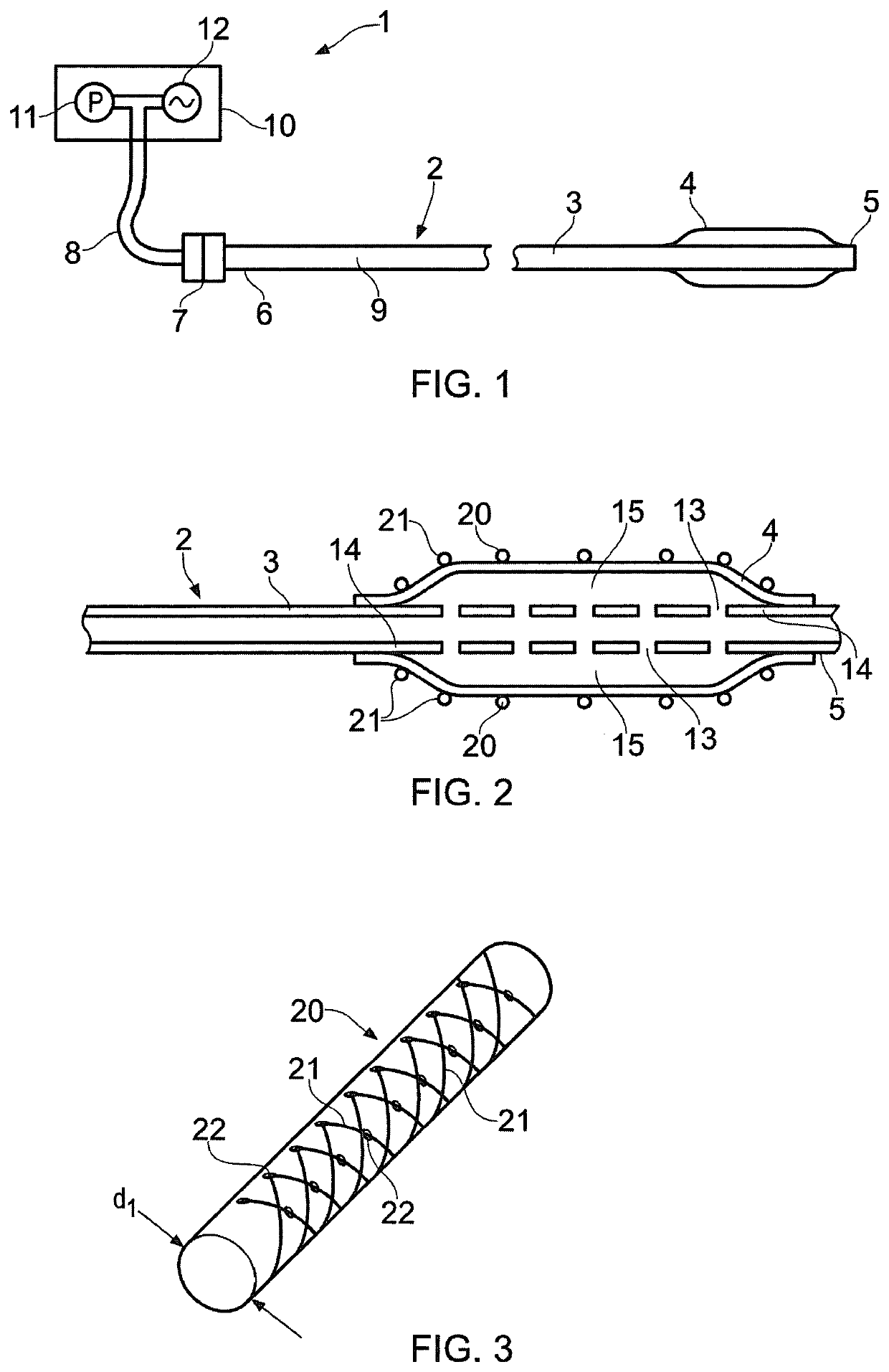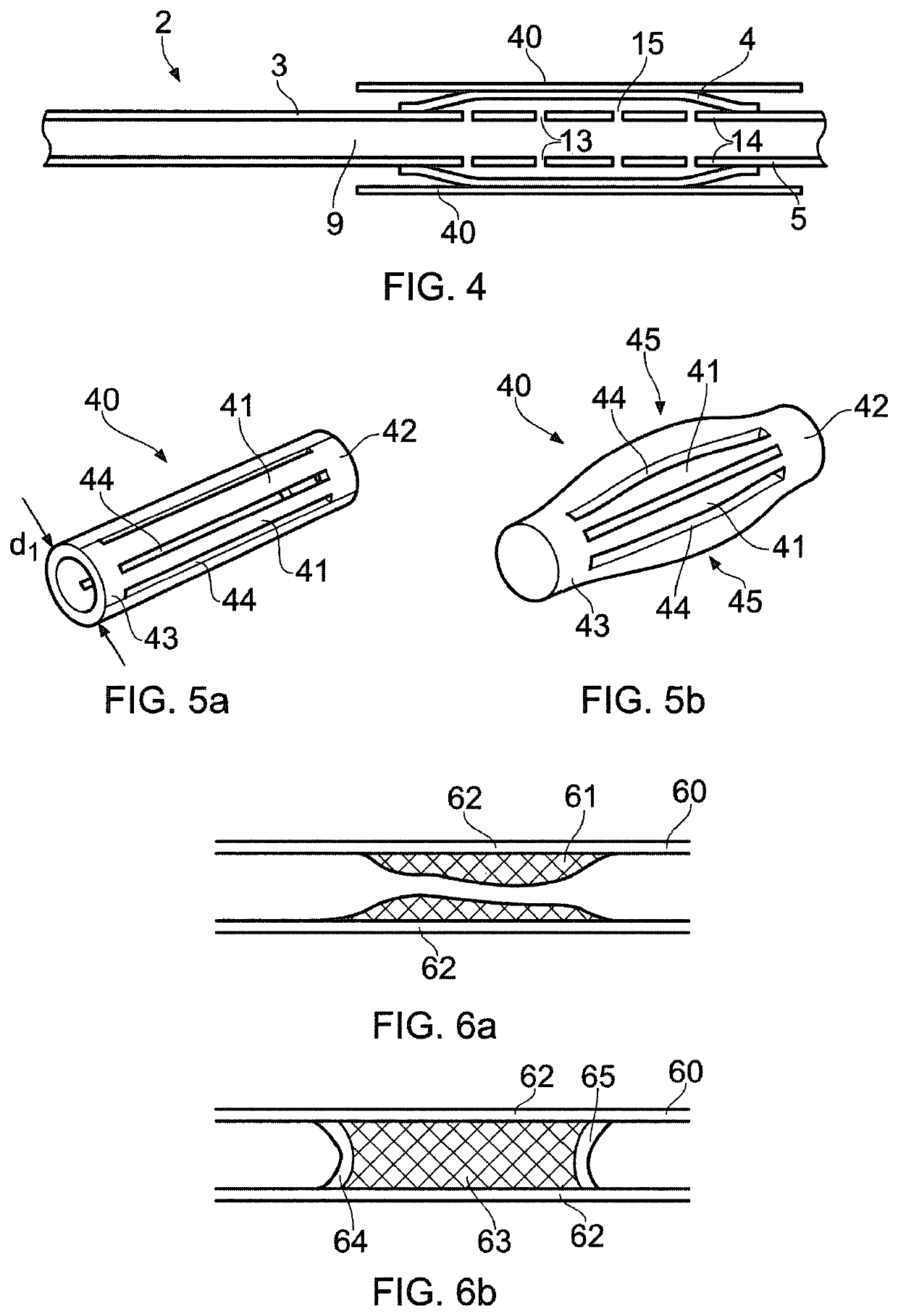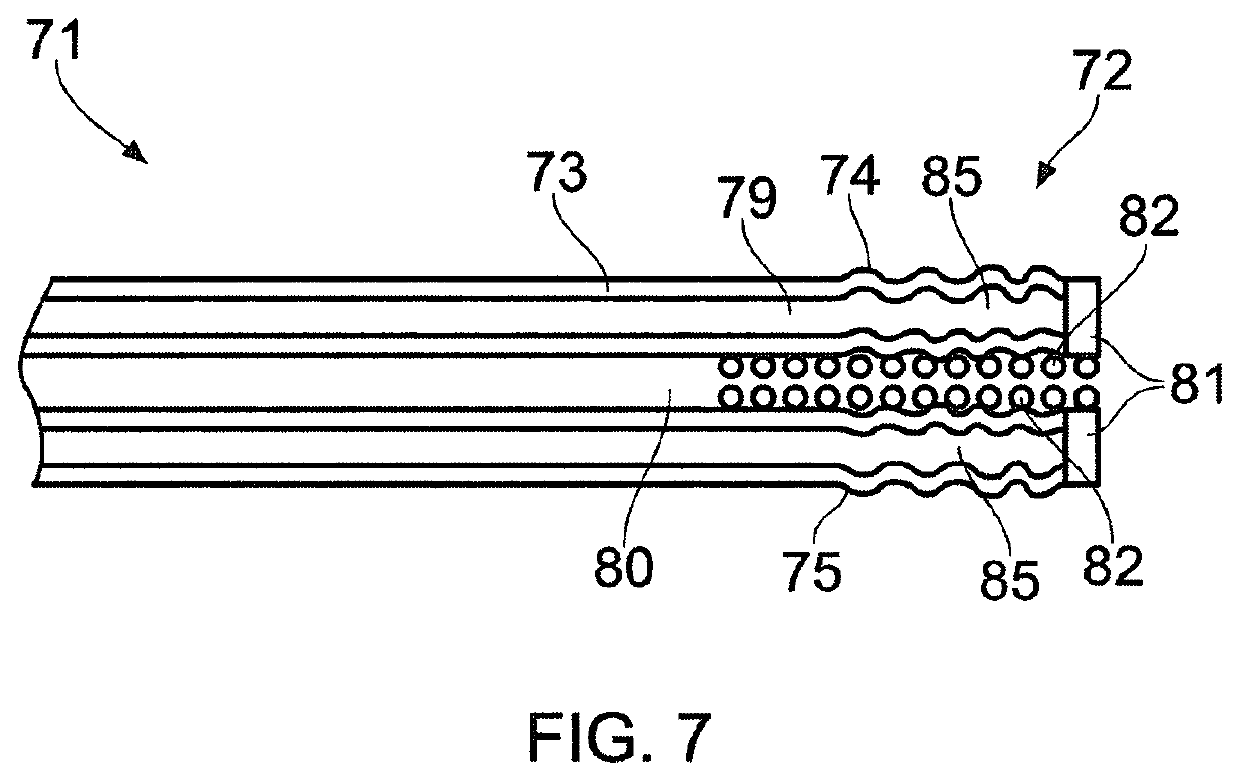Angioplasty of calcified arteries
a calcification artery and angioplasty technology, applied in the field of angioplasty of calcified arteries, can solve the problems of increasing the risk of complications, increasing the complexity of the procedure, and insufficient expansion of the coronary artery stents
- Summary
- Abstract
- Description
- Claims
- Application Information
AI Technical Summary
Benefits of technology
Problems solved by technology
Method used
Image
Examples
Embodiment Construction
[0044]A challenge with vascular mural calcification is that it can be hard and brittle. This combination can create particular difficulties during percutaneous angioplasty. To overcome hardness may require the use of very high pressures during balloon inflation, whilst brittleness means that instead of plastic deformation occurring under the application of increasing pressure, a sudden failure may occur. It is this hard and brittle behaviour which makes traditional balloon dilation of calcified vessels difficult or risky (e.g. potentially leading to dissection or perforation as a result of sudden calcium fracturing at high inflation pressures).
[0045]However, it is the hardness and brittleness of calcium that is exploited in this invention. Lack of plastic deformation in calcium results in fracture upon application of a large enough force. Mechanical impacts result in production of large forces over the short impulse time during which the energy is transferred from one object to the ...
PUM
 Login to View More
Login to View More Abstract
Description
Claims
Application Information
 Login to View More
Login to View More - R&D
- Intellectual Property
- Life Sciences
- Materials
- Tech Scout
- Unparalleled Data Quality
- Higher Quality Content
- 60% Fewer Hallucinations
Browse by: Latest US Patents, China's latest patents, Technical Efficacy Thesaurus, Application Domain, Technology Topic, Popular Technical Reports.
© 2025 PatSnap. All rights reserved.Legal|Privacy policy|Modern Slavery Act Transparency Statement|Sitemap|About US| Contact US: help@patsnap.com



